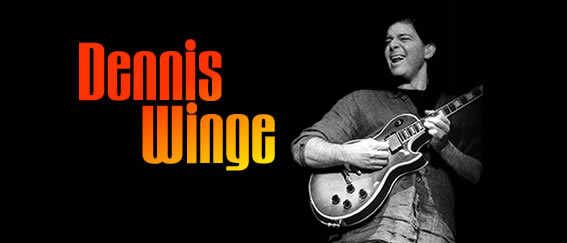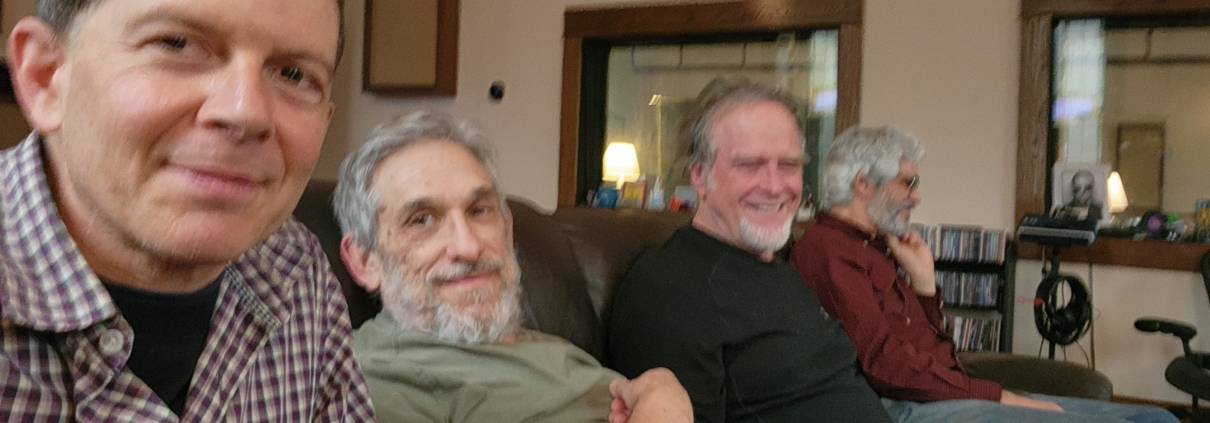Recording Sunset Salsa’s Debut Album: Sweat, Soul, and Studio Time
After months—maybe even years—of dreaming and planning, the past weekend marked a major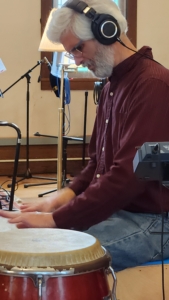 milestone for me and my band, Sunset Salsa. We recorded our debut album. And even though I’ve recorded many times before and spent countless hours in the studio, this one was different. More intense. More exhausting. More fulfilling. And, frankly, more eye-opening than I expected. I wanted to take a moment and reflect on what it was like to bring this music to life.
milestone for me and my band, Sunset Salsa. We recorded our debut album. And even though I’ve recorded many times before and spent countless hours in the studio, this one was different. More intense. More exhausting. More fulfilling. And, frankly, more eye-opening than I expected. I wanted to take a moment and reflect on what it was like to bring this music to life.
We’ve been rehearsing for months—nonstop, really. I’ve had this repertoire under my fingers for about six months now, and it’s become almost second nature. Every riff, every groove, every break, every arrangement burned into muscle memory. There’s something about that kind of repetition—it’s comforting and demanding at the same time. You start to feel like you’re living inside the music. And by the time we walked into the studio, I thought I knew exactly what to expect. Turns out, I didn’t.
We booked a killer studio right near my home—great sound, great gear, and a relaxed vibe that makes creativity flow. I’ve recorded a bunch of albums there before, and I knew it was the right spot to capture this band’s energy. The plan was straightforward: record 12 songs over two days. That’s a tall order, sure, but with how tight we were feeling in rehearsals, I figured it was doable.
Day One: The Marathon Begins
And we came in hot. Day one, we tracked nine songs. Nine. In one day.
We hit the ground running. No time to second-guess anything. I was calling shots, pushing us forward, tracking take after take. The band delivered, no doubt about it. But I’ll admit—I didn’t fully grasp how hard I was pushing everyone until the next morning when I woke up feeling like I had a hangover. And I hadn’t had a drop of alcohol. That’s when it hit me: I’d turned into a bit of a slave driver. I even joked with the guys about it, trying to lighten the mood, but I could see they felt it too. It was a lot.
Day Two: The Final Songs
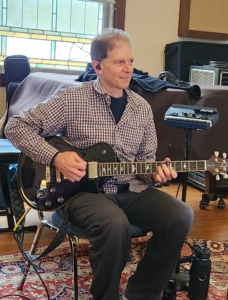 Still, we rallied. On day two, we knocked out the remaining three tunes, and redid one of the one’s from the day before as well. By around 1 p.m., we were done tracking. But the day wasn’t over. Far from it. We spent the rest of the time listening back to every single take of every single song. That kind of focused listening is its own kind of draining. It’s exciting, sure—but when you’re trying to decide which version has the best energy, the tightest groove, the best feel—it’s intense.
Still, we rallied. On day two, we knocked out the remaining three tunes, and redid one of the one’s from the day before as well. By around 1 p.m., we were done tracking. But the day wasn’t over. Far from it. We spent the rest of the time listening back to every single take of every single song. That kind of focused listening is its own kind of draining. It’s exciting, sure—but when you’re trying to decide which version has the best energy, the tightest groove, the best feel—it’s intense.
By the end of day two, I was completely fried. Not just tired—mentally and physically wiped. Recording takes everything out of you, even when you’re prepared. And thankfully, we were very well-rehearsed. I honestly don’t know how I could’ve played that material otherwise. People outside the recording world don’t always realize how much work it is. It’s not just hitting “record” and playing your part. It’s pressure. It’s precision. It’s performance under a microscope.
Day Three: Fixes and Fatigue
The third day, I came in alone. The rest of the band got to rest, but I had a few guitar fixes to make. Just three hours of work, but by the end of that session, I was shattered. Just done. My brain was oatmeal. My fingers were toast. And I remember thinking, how did I not see this coming?
But even through the exhaustion, I could tell we had something special. The band played beautifully. All those rehearsals paid off. Every groove was tight. Every arrangement fell into place. And even though I was questioning whether I was too hard on everyone, I know the intensity brought out the best in us. The music feels alive, vibrant, danceable, and honest.
The Band
Let me talk about the band for a moment, because they deserve all the credit in the world. Jorge Cuevas and Michael Wellen on percussion—absolute monsters. Their chemistry is unreal, and they brought so much flavor, color, and texture to every track. Doug Robinson on bass—solid as a rock. Groovy,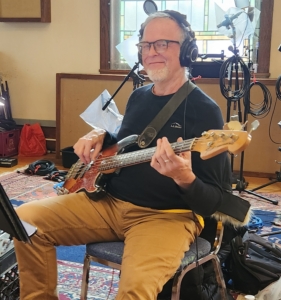 supportive, and locked in with the rhythms like he was born to play this stuff.
supportive, and locked in with the rhythms like he was born to play this stuff.
And then there’s me on guitar—handling melody, harmony, solos, and holding the entire harmonic structure down. Originally, I had thought about adding a pianist or maybe a sax player. But the more we rehearsed, the more I realized that I could carry the weight. I’ve played solo gigs for so long, it’s second nature to fill in all the spaces myself. It’s a lot, yes—but it’s also freeing. I don’t have to negotiate arrangements with more players, and frankly, one less person to pay makes the logistics easier too.
The Music
The album is an eclectic mix of Latin styles—salsa, merengue, bachata, Latin jazz, and some fusion elements. It’s music meant to be danced to or listened to. That balance was really important to me. I didn’t want to make a strictly “musician’s record” or a purely “party album.” I wanted something that could sit on a jazz festival stage or get people moving at a salsa event. And I think we hit that sweet spot.
The salsa tunes include Pa’lla Voy by Marc Anthony, Idilio by Willie Colón, Come Candela (a Mongo Santamaria classic), and Atrevida. We’ve also got some slower guarija/cha cha chas, like I Like It Smooth Mucho—a medley of Smooth Operator, Bésame Mucho, and I Like It Like That—as well as Que Se Funan.
For the Latin jazz side, we recorded There Is No Greater Love, Nardis (arranged as a hyped-up Mozambique groove with heavy guitar), and Afro Blue in a similarly fiery treatment.
There are two bachatas: Nostalgia in Times Square (originally by Charles Mingus) and Bachata en Fukuoka, plus one merengue medley that blends Compadre Pedro Juan and Pégame Tu Vicio.
We’re now waiting on rough mixes from the engineer. Once we get those, Jorge will come back in and lay down some additional percussion—bongos, güira, maybe some extra layering to give each tune that extra sparkle. But even in their raw state, the tracks sound fantastic. I can already tell this will be something I’m proud to have my name on.
Recovery Mode and Looking Ahead
One unexpected twist? I was going to bed by 7:30 p.m. every night after the sessions. Just completely zonked. That never happens to me. Even so, it wasn’t until Tuesday—two days after we wrapped—that I started to feel somewhat human again. And even then, I was still a bit scatterbrained. It’s a real reminder of how deeply this kind of creative work takes it out of you.
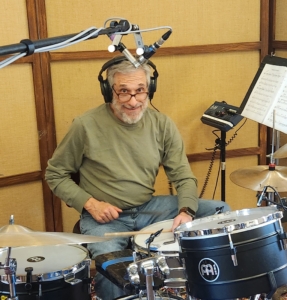 Now that the initial tracking is done, I’m starting to look ahead. Once the final mixes are ready, we’ll figure out a release plan. I’m hoping we can play some jazz festivals, as well as plenty of salsa dance events. I think we could fit right in with that crowd—and bring our own twist to the mix.
Now that the initial tracking is done, I’m starting to look ahead. Once the final mixes are ready, we’ll figure out a release plan. I’m hoping we can play some jazz festivals, as well as plenty of salsa dance events. I think we could fit right in with that crowd—and bring our own twist to the mix.
Final Thoughts
In the end, this experience reaffirmed everything I love (and sometimes hate) about recording. It’s a grind. It’s a marathon. It messes with your head. But it’s also a chance to capture a moment in time. To document the magic that happens when great musicians come together and pour everything they have into something bigger than themselves.
This album is that moment for Sunset Salsa. And I can’t wait for you to hear it. [EDIT: The album can be heard here!]
—
If you are planning a wedding, private party, or corporate event and you want to explore your options for musicians to provide live music, book a free music consultation with me or simply write to me on the contact page.
